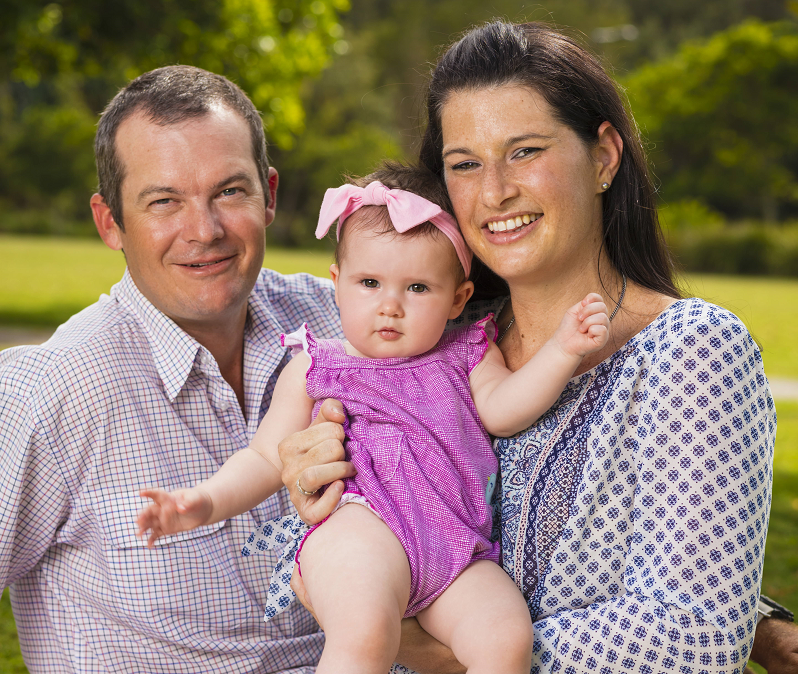The story is about a woman called Stephanie Garland, or Steph to friends and family, and is a wonderful example of how your donations help our research and give hope to people living with diseases and disorders of the brain.
Steph was a wine sommelier when epileptic fits ruined her senses of taste and smell, the two senses most central to her work. It says something about epilepsy that now, looking back, she doesn’t even rate that as the worst part of her attacks.
‘I lost at least ten years of memories,’ she said from her home on Queensland’s Gold Coast. ‘The part of my brain where the seizures were affects taste, smell and memory. It was in the hippocampus, where the memory centres and emotions are. I can’t remember most of my years travelling the world. The only stories I can tell are stories people who were travelling with me have told me about, or I try to fudge it off photos from my trips.
‘It certainly didn’t help my work at the time. Part of my job was tasting and rating wines but with the seizures, everything just tasted terrible, a bit metallic.’
Over 250,000 Australians are currently living with epilepsy and more than 65 million people worldwide.
Epilepsy is a brain disorder that sees sudden, uncontrolled electrical discharges affect groups of neurons. It can have many manifestations.
You might think of people collapsing and having spasms, but some forms of the disease, like the one Steph battled, are subtler and less obvious. Hers left her staring absently into space, then feeling later like she’d been hit by a truck, with memory or senses scrambled.
In hindsight, the attacks started when she was living in England, at about 23 years of age, but didn’t really become alarming and obvious until a few years later, when she was travelling with her future husband, Adam, who noticed in Nepal and India that she ‘wasn’t right’.
In March 2011, Steph found herself in Melbourne, at the Florey Institute, meeting Professor Graeme Jackson and undergoing MRI scans to try and find the source of her seizures.
In fact, she was suffering what is known as ‘lesion negative epilepsy’, which traditionally was a difficult form of epilepsy for doctors to pinpoint a potential surgical solution, but has seen major steps forward in recent years, thanks to advanced scanning technology and techniques.
‘Epilepsy surgery has been performed for many years, but the treatment of MRI negative epilepsy has been less successful until advances in imaging and investigations refine where the epilepsy is coming from,’ Graeme explained.
‘This is an evolving and changing field consisting of many small “breakthroughs” in lots of areas.’
Steph said despite the stated risks, such as a chance of suffering a stroke, she was very keen to have the surgery. ‘I’m a now or never type of person,’ she said, laughing. ‘I don’t mind an adventure. I was like, let’s go for it! It was hard on me as the patient, but it was even harder on my family.’
Solving the seizures ended up taking two rounds of surgery, with the last one, in July 2015, appearing to control the disease. Steph considers herself lucky that the surgery was in the right side of her hippocampus, as the left side of that part of the brain may have affected her speech and language.
‘I know all about this stuff now,’ she laughed. ‘It’s wine books on the bottom shelf, and neurology books at the forefront at my place these days.’
Professor Jackson agrees that Steph was lucky, saying many epilepsy patients are not candidates for surgery that might fix their symptoms. ‘Up to 30 per cent of focal epilepsy patients have epilepsy that is not controlled with medications and Stephanie is typical or even the best of this group as she was able to have a relatively stable life.
Only some of these patients can currently be treated with surgery and Stephanie was lucky as there was no obvious lesion to operate on. This is really a condition that needs further research and investment. You can see what a difference successful treatment makes,’ he said.
These days Steph doesn’t drink alcohol, is on permanent medication to supress any potential epileptic comebacks, and has a baby girl, Mabel, who is 10 months old.
She was impressed all over again when Professor Jackson was in constant contact with her Queensland doctors throughout her pregnancy.

‘The Austin and their Epilepsy Program has long had a program of “follow up” for at least two years after surgery as patients adjust to a life without seizures,’ Graeme explained.
‘Dr Peter Bladin began this and recognised that the problems of social adjustment – catching up on lost time, mood, family adjustment, and the problem of now being normal – are part of our role in “curing” the epilepsy.
Steph was my patient and I manage pregnancy in epilepsy in this way in all my patients. Pregnancy and delivery is a demanding time and reassurance that we have a plan for seizures is important.’
Steph knows her epilepsy is now controlled, not cured, but says she is used to her medication and is grateful to be able to live as well as she now does, nursing Mabel and savouring life.
‘I would do anything for the Florey,’ Steph says. ‘Without the research that the Florey does, I would have had no chance.
Now life has never tasted so good – that’s what I say while I’m eating my food! I can enjoy something to eat, thanks to the Florey. It’s all about quality of life; that’s why I went for the surgery, and I’m so lucky.’
As you know, medical research requires a lot of investment and every dollar counts.
Please consider a tax-deductible donation to the Florey.